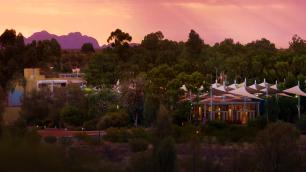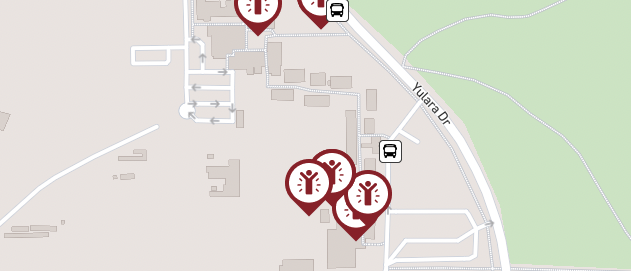Stories are written in the stars
The Australian Outback is perhaps one of the best places to explore the galaxy of stars in the night sky. The low humidity and minimal unnatural light in the Red Centre allow you to view the stars and planets like you've never seen them before. You'll see the wide expanse of the Outback sky ablaze with countless stars. And, if you join the Sounds of Silence dinner, a resident astronomer will take you on a journey through the heavens, letting you view the stars and planets and other astral bodies through the powerful telescopes on site.
Bring your binoculars, bundle up, and head outside to experience the beauty of a sparkling Outback sky during a guided tour or on your own.
Libra - The Scales
Libra is the only one of the classical zodiac constellations which doesn't depict a human or animal. In China it was known as the Star of Longevity which they called Sho-Sing.
Orion - The Hunter
Orion is not a zodiac constellation, but appears at the feet of Gemini, the Twins. Greek mythology has it that Orion the Hunter was an arrogant chap who was stung to death by a scorpion.
The Pleiades or Seven Sisters
The Seven Sisters story is part of an Aboriginal songline that traverses the breadth of the continent, from the east to west coast of Australia. In Central Australia they say the seven beautiful women were seen by the hunter Wati Nehru.
Scorpio - The Scorpion
Scorpio, or Scorpius, is large and easily recognisable in winter. When the Aboriginal people from Yirrkala on the north coast of the continent saw Scorpius in the early morning sky they predicted they would soon see Indonesian traders sail into the Gulf of Carpentaria.
The Southern Cross
The Southern Cross and two pointer stars are used to find south in the southern hemisphere, while in the northern hemisphere they use the North Star to find north.
The Moon
Planets often have satellites revolving around them. We call ours the moon. A story from South Australia calls the moon Meeka, and the sun Ngangaru. It is said that they both live in a cave where the moon goes down.
Venus - The Morning Star
In Arnhem Land, the Aboriginal people know the planet Venus - the morning star - as Barnumbir. Her appearance at dawn was very important to all women in their preparation for the daily hunting and gathering.
Canopus
The star Canopus is about 200 light years away. So the light we see from it now left the star at about the time Captain James Cook arrived in Australia.
Saturn
Saturn, the god of Time, leader of the Titans and Jupiter's father, is a planet made mostly of liquid hydrogen, only about 70% as dense as water. Saturn has 62 moons, the largest of which is Titan.
Shooting Star
A shooting star is a piece of rock or dust seen burning up as it enters the earth's atmosphere.
Small Magellanic Cloud
The Small Magellanic Cloud has about 2000 million stars and is a bit further away than the Large Magellanic Cloud, by about 190,000 light years.
Large Magellanic Cloud
The Large Magellanic Cloud contains about 10,000 million stars and lies about 170,000 light years away.














